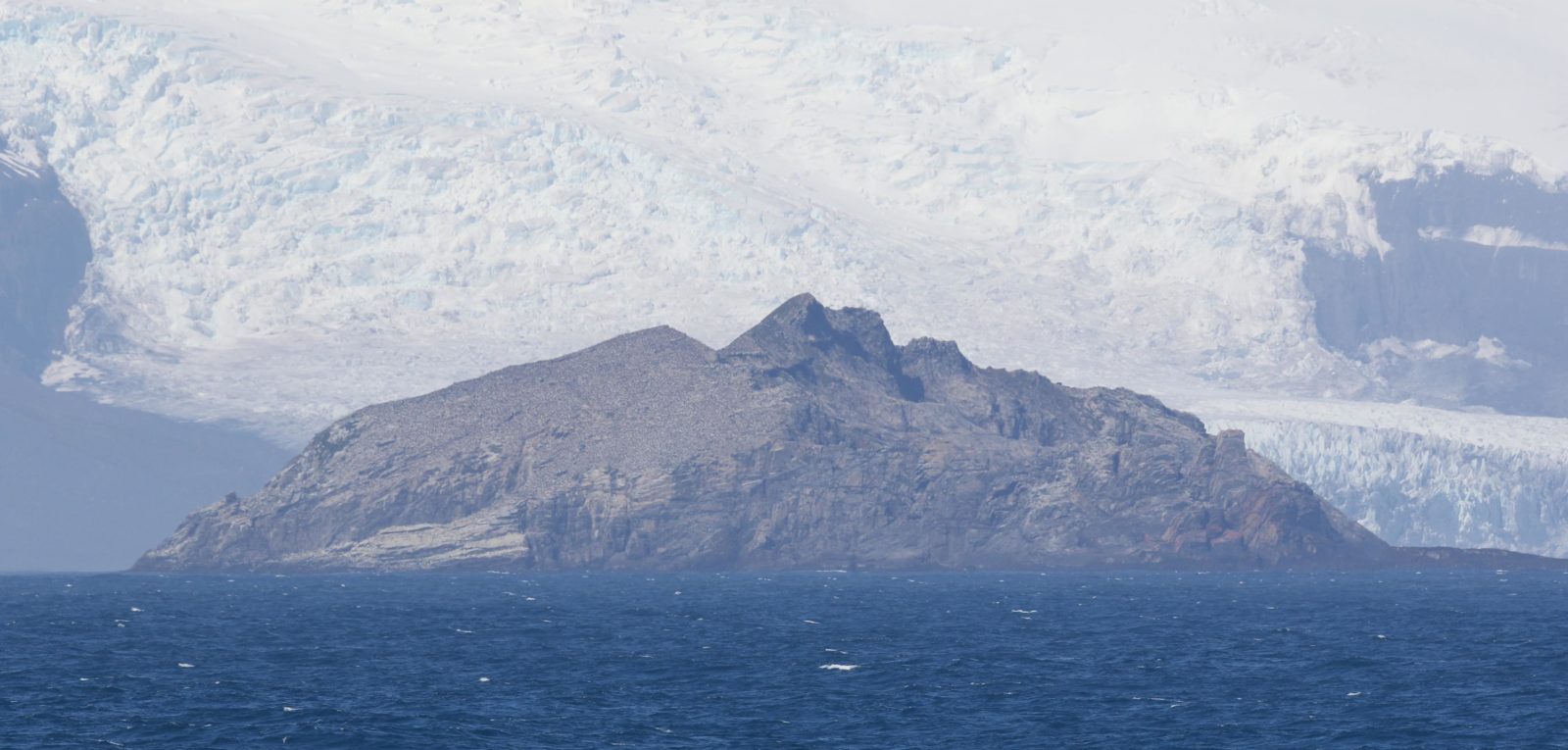 By Peter Ryan, onboard scientist, expert in general ornithology, seabird-fishery interactions, evolutionary ecology, marine debris, solid waste management, biology of oceanic islands.
By Peter Ryan, onboard scientist, expert in general ornithology, seabird-fishery interactions, evolutionary ecology, marine debris, solid waste management, biology of oceanic islands.
Leg 1, Day 19 – January 8th, 2017.
The day dawned calm and mostly clear at 4h00 local time, but a band of low cloud obscured any view of Heard Island, about 25 miles south of the ship (which was still tacking despite the small swell). The first view of the island finally appeared under the cloud around 6h30, as we were escorted in by thousands of Antarctic Prions, levened by a smattering of Fulmar Prions. The decks became crowded with tourists as more and more of the island came into view. By mid-morning we were treated to a rare view of the peak, steaming away. Unfortunately the ship remained well offshore and no Heard Island Shags were adventurous enough to venture out to visit us.
Between sight-seeing and dredge stations, only a few hours of transect counts were conducted, yielding relatively few species:
| Antarctic Prion | 150 | Diving petrel spp. | 75 |
| Wilson’s Storm Petrel | 55 | Blue Petrel | 14 |
| Fulmar Prion | 13 | Macaroni Penguin | 7 |
| Black-browed Albatross | 4 | Gentoo Penguin | 2 |
| Northern Giant Petrel | 2 | Southern Giant Petrel | 2 |
| Cape (Pintado) Petrel | 2 | White-chinned Petrel | 2 |
| Kerguelen Petrel | 2 | Brown Skua | 2 |
| Rockhopper Penguin | 1 | Wandering Albatross | + |
| Light-mantled Albatross | + |
A fishing vessel peeked above the horizon in the late afternoon, and there were some whale blows but the animals remained distant. One piece of litter (a soggy piece of polystyrene) was seen on the approach to Heard. Only Bull Kelps Durvillaea antarctica were observed; Macrocystis does not occur at Heard Island.
